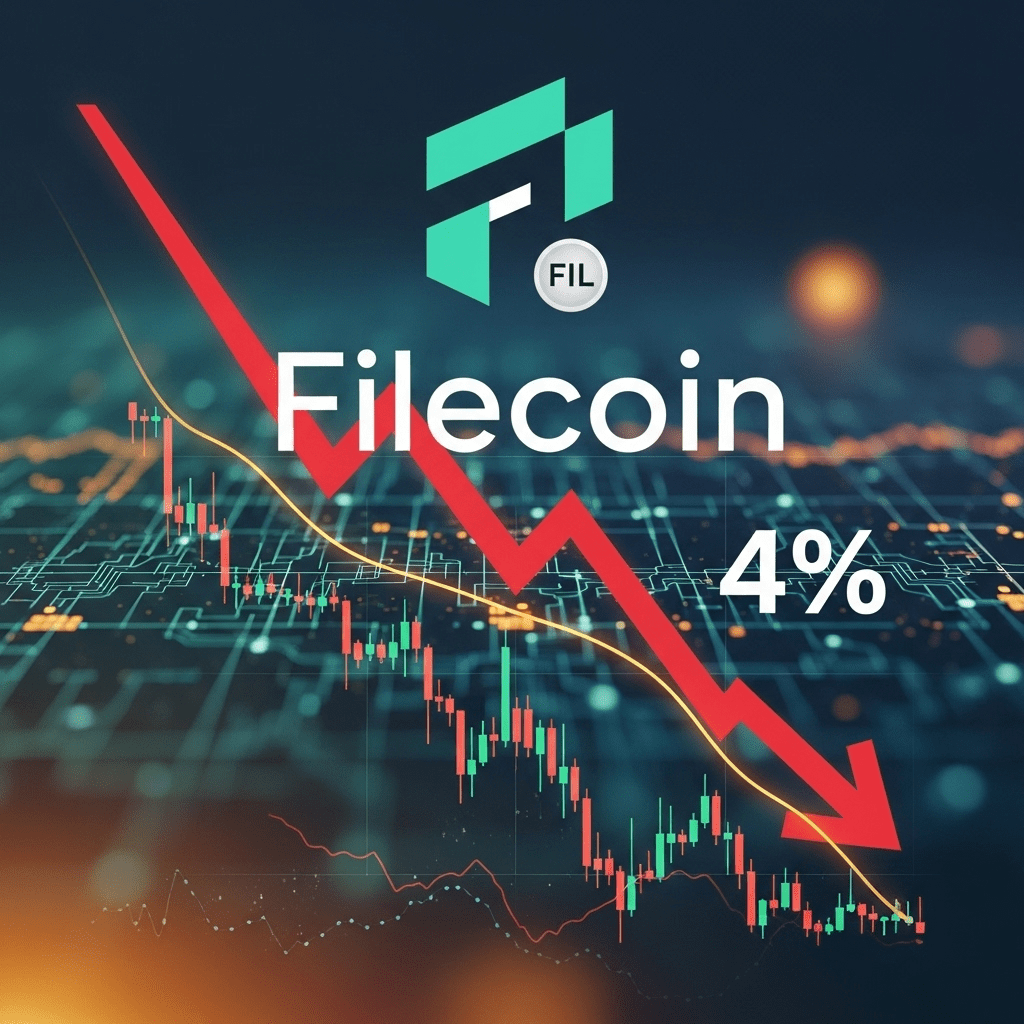Amid continued turbulence in the crypto markets, Filecoin confronts persistent selling pressure as token slumps 4% during another volatile trading session in 2025. The decentralized storage platform’s native cryptocurrency, FIL, is under a microscope as traders and investors react to technical weaknesses, broader altcoin headwinds, and evolving narratives within the decentralized Web3 space.
Filecoin Confronts Persistent Selling Pressure as Token Slumps 4%: What’s Driving the Decline?
Filecoin, long seen as a cornerstone for decentralized data storage and innovator in web infrastructure, now faces mounting bearish pressure. Over the last 24 hours, the FIL token has shed approximately 4% of its value, underperforming major peers such as Bitcoin and Ethereum. While the greater crypto market has been exposed to short-term corrections, analysts point to specific challenges affecting Filecoin’s performance.
On-chain data, technical analysis, and macroeconomic factors all play a role in FIL’s recent decline. Selling pressure has intensified as short-term holders take profits, while long-term holders hesitate, waiting for clearer signs of trend reversal. Increased competition from rival storage protocols and unanswered questions about Filecoin’s revenue growth have further contributed to downward price momentum.
Analyzing Filecoin Price Action in a Shifting Crypto Landscape
The 4% slide in FIL’s price comes on the back of a series of lower highs and reduced trading volumes. As crypto news outlets report, technical indicators across multiple timeframes suggest waning buyer interest, and several large wallets have offloaded significant FIL holdings. Coupled with negative funding rates in derivatives markets, it has become clear that sentiment—at least in the short term—remains fragile.
Zooming out, macroeconomic uncertainty adds to FIL’s price woes. Hawkish central bank policies and risk-off investor sentiment have triggered capital outflows from high-beta altcoins, impacting Filecoin’s ecosystem. Furthermore, questions about scalability, network utilization, and protocol upgrade roadmaps prompt further caution from both retail and institutional investors tracking FIL’s prospects.
Persistent Selling Pressure: Is Filecoin’s Fundamentals Still Intact?
Despite the downturn, many observers argue that Filecoin’s core value proposition endures. As enterprise interest in decentralized storage grows and demand for cost-effective, censorship-resistant data solutions accelerates, Filecoin remains poised to claim a significant share of this niche. In 2025, partnerships with major Web3 and AI players have shone a positive spotlight on the protocol, even as token price action disappoints.
Still, skepticism lingers regarding tokenomics. Enhanced vesting schedules, periodic protocol payouts, and incentives for storage providers create regular liquidity influxes, occasionally fueling downward price trends. While this design promises decentralization and ecosystem growth, it complicates the supply-demand dynamic and can erode market confidence during periods of low demand.
The Broader Crypto Market Context: Headwinds and Silver Linings
It’s important to note that Filecoin’s latest price slip is not occurring in a vacuum. Across the digital assets landscape, many altcoins have been subject to elevated volatility and profit-taking pressures. Regulations targeting decentralized finance (DeFi), as well as uncertain tax treatment for crypto holders, are creating uncertainty for both projects and investors alike. Filecoin’s ecosystem, straddling storage, smart contracts, and decentralized identity solutions, is exposed to this complex regulatory environment.
Nevertheless, some strategic investors see opportunity during market corrections. As highlighted on several leading investment research platforms, long-term believers in Filecoin’s decentralized storage thesis are accumulating tokens at perceived discounts. These market participants trust that, as enterprise adoption rises and the developer community continues to innovate, FIL’s utility and demand will ultimately stabilize its price over the long run.
Community and Development: Can Upgrades Turn the Tide?
Development activity on the Filecoin protocol remains robust. Recent roadmap announcements include new efficiency upgrades, improved interoperability with both Ethereum and Cosmos, and initiatives to expand Filecoin’s ecosystem for gaming and AI data storage. These innovations could potentially attract new users and investors, offsetting some of the token’s bearish momentum.
Moreover, governance proposals circulating among Filecoin’s decentralized autonomous organization (DAO) aim to incentivize network participation and bolster the protocol’s long-term sustainability. Developers and community members are hopeful that, as these upgrades come online, the network’s fundamentals will once again drive positive sentiment for FIL.
Looking Ahead: Will Filecoin Overcome Persistent Selling Pressure?
With Filecoin confronting persistent selling pressure as token slumps 4%, the coming weeks will be critical for assessing the project’s resilience. Market observers will closely monitor both price movements and on-chain growth metrics. If Filecoin can demonstrate continued utility, retention of storage providers, and user growth amid broader crypto turbulence, the recent dip could ultimately be viewed as a temporary setback.
For newcomers and seasoned investors alike, Filecoin’s situation underscores the need to balance short-term price action with long-term fundamental analysis. Those interested in diversifying into next-generation storage tokens would benefit from following reliable crypto insights and staying abreast of protocol upgrades, adoption milestones, and regulatory shifts.
Conclusion
The current episode—where Filecoin confronts persistent selling pressure as token slumps 4%—serves as a reminder of the volatility and complexity inherent in crypto markets, especially for utility-driven altcoins. While short-term headwinds cannot be ignored, Filecoin’s foundational efforts and active community may yet provide the momentum needed for a future rebound.
